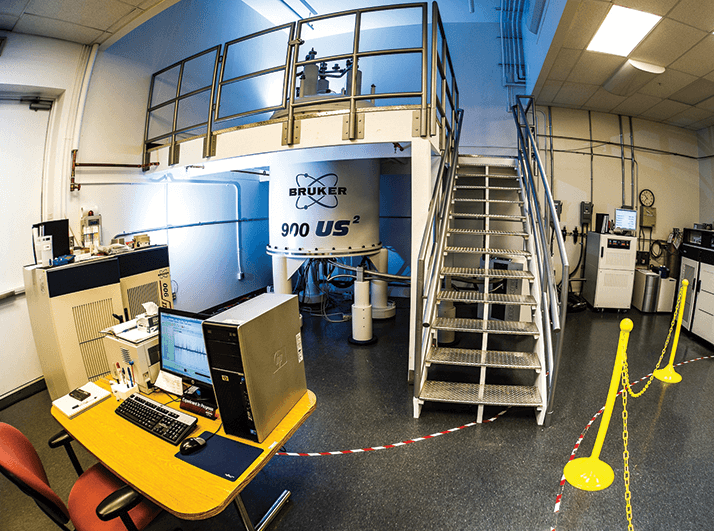Conventional wisdom says that nuclear magnetic resonance spectroscopy (NMR) measurements begin to fail for molecules that are larger than 30,000 Daltons without using more sophisticated isotope-labelling techniques, but that doesn’t mean it’s impossible. Using NMR, a team of researchers from the National Institute of Standards and Technology (NIST) have measured the ‘fingerprint’ of a monoclonal antibody (mAb) (1). A mAb’s structural configuration could have profound consequences on safety and efficacy. Robert Brinson, a research chemist at NIST, tells us more about the work.

To aid in the development of methodologies for mAbs, NIST received a donation of an IgG1-kappa in its fully formulated state. It is being developed as a NIST standard reference material certified for concentration that is traceable to the Kg. NIST, along with many partnering institutions, is characterizing this material (which we call the NISTmAb).
The intact mAb is around 150,000 Daltons, and the Fc and Fab fragments are 50,000 Daltons. For comparison, aspirin – the classic small molecule drug – is 180 Daltons. The biologic Neupogen is 18,800 Daltons. A small molecule drug can be readily characterized, but this is not the case for a complex biotherapeutic protein. While the primary amino acid sequence may be known, one protein batch can be safe and another toxic. This is due to the higher order folding – the primary sequence folds back on itself into a secondary and tertiary structure, and quaternary structures. The general purpose of our method was to develop and apply NMR spectroscopy as a higher order structure assessment tool to mAbs. Our goal was to show that this technique could deliver data that demonstrates highly similar or fingerprint-like similarity between protein lots, or between an innovator and a biosimilar.
Our goal as a lab is to push the practical limits of NMR spectroscopy. Within that framework, it was natural for us to attempt this type of characterization. We were pleasantly surprised, however, that we successfully collected data with such high quality on the intact NISTmAb. We demonstrated that collecting the 2D 13C,1H NMR methyl fingerprint is feasible on the intact mAb. The methyl group has greater rotation than other functional groups, which leads to sharper peaks and therefore higher spectral quality. These groups are dispersed throughout the protein and directly report on how well the protein is folded. Since NMR systems with lower magnetic field strength are more commonly found in analytical research labs, we divided the NISTmAb enzymatically into its two constituent Fc and Fab fragments so that the NMR mapping approach could be employed using more commonly available NMR systems. Importantly, we demonstrated that the two fragments generated from the full mAb showed no loss of structural information and that the sum of the fingerprint patterns of the fragments could be matched to the intact mAb. It’s also worth mentioning that our team used a combination of ‘spin physics and sampling tricks’ to successfully reduce the overall measurement time from multiple hours to around 30 minutes!
Typical techniques include HPLC, SEC, DSC, FT-IR, CD spectroscopy – to name a few. A number of these exhibit high sensitivity but low to moderate resolution. They tend to look at overall structural elements and features but can miss detailed and important folding changes. NMR allows assignment of signals at atomic resolution. In the case of this study, we are observing direct connection between individual hydrogens and carbons in the protein molecule. Any issues with higher order structure will be apparent from the NMR spectral read-out. That being said, I would like to caution that the NMR method should be considered as complementary to other analytical techniques.
This measurement technique provides a robust means for a company to use for the characterization of the higher order structure of a protein drug product. This can be useful in pre-clinical and clinical setting by showing where the drug is acting and why. In a QC environment, NMR could potentially be used to evaluate multiple lots through statistical comparability methods and comparing biosimilars to innovator products.
References
- L.W. Abrogast, R.G. Brinson and J.P. Marino, “Mapping monoclonal antibody structure by 2D 13C NMR at natural abundance,” Analytical Chemistry, 87, 3556-3561 (2015). DOI: 10.1021/ac504804m




